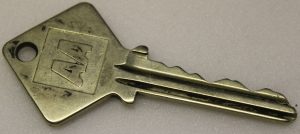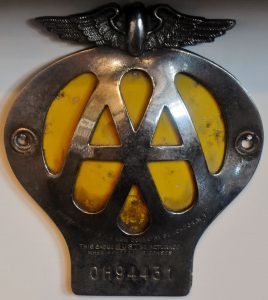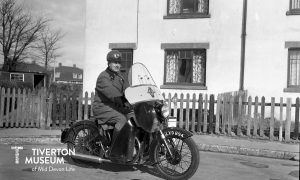In September 1923, there were several reports in the Gazette about ‘reckless driving’. There was certainly blame put on visitors by one member of the Roads and Bridges Committee: ‘These horrible people come in and out of the county, and they don’t care tuppence what damage they do, or what speed they go’.
A weekly motor journal had offered prizes for suggestions to increase the safety of motoring. The Gazette printed the submission made by a ‘Tiverton motorist’ which contained 11 suggestions. Here is a summary:
- standardised road signs
- driving licence should be for a car or a motorbike, not both
- more enforcing of ‘the rule of the road’ (the Highway Code was only published in 1931)
- passing on blind corners should be prohibited
- chars-a-banc should only ply on roads that are wide enough and not exceed 15mph
- should be an offence to use ‘dazzle-headlights’
- pedestrians or cyclists causing accidents should be prosecuted
- ’drunkeness and flagrant cases of road hogging’ should be sent to prison, no option of a fine
- effective notices warning of crossroads, dangerous hills and corners should be erected throughout the country, also suggest a ‘pamphlet’ describing them
- improve the state of the roads
- on country roads, motorists should keep their distance from the car ahead
The two major motoring organisations in the early days are still prominent today. The Royal Automobile Club (RAC) which was founded in 1897 as the Automobile Club of Great Britain, gained Royal approval from Edward Vll in 1907. The Automobile Association (AA) began operations in 1905. The Museum holds artefacts from both organisations.
The AA key was issued to members and allowed access to the many telephone boxes in place around the country. In their hey-day, there were almost 1000 in situ allowing members to summon help for breakdowns. The patrolmen travelled at first by bike, then by motorbike and finally used vehicles. In 1923, there were 650 cycle and motorcycle ‘AA men’ on the roads.

AA Key
Each member also received a badge which was attached to the radiator grill. Patrolmen would salute a car as they passed by. Engraved on the badge is ‘this badge must be returned when membership ceases’. This one obviously escaped!!

AA Membership Badge
By 1968 almost all patrols were in vans and in 2002 the AA boxes were decommissioned given the widespread use of mobile phones. There are still 19 in existence, 8 of these are Grade ll listed and include boxes at Porlock and at the Half Way House on the Sidmouth Road.

AA Patrolman
Written by museum volunteer, Sue B

